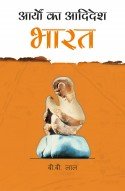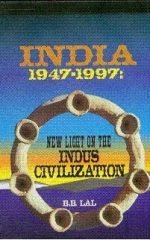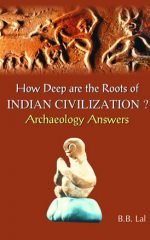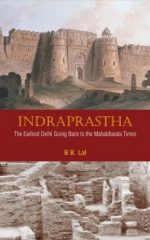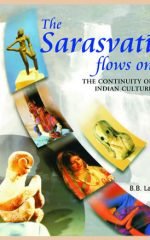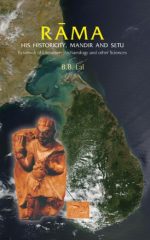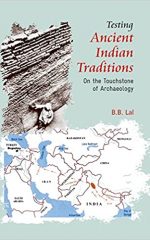आर्यों का आदिदेश भारत Aryon ka aadidesh Bharat
आर्यों का आदिदेश भारत Aryon ka aadidesh Bharat
इस पुस्तक में आर्य समस्या के लगभग सभी संबंधित पहलुओं को शामिल किया गया है जैसे कि भारत पर आर्यों का आक्रमण, और उसका विकल्प, भारत में आर्यों का प्रवास। यह पुस्तक बताती है कि ये सभी सिद्धांत मौलिक रूप से गलत हैं। इसके अनुसार आर्य भारत के मूल निवासी थे। वास्तव में, ऋग्वैदिक लोग 2000 ईसा पूर्व के आसपास पष्चिम एशिया में चले गए जहां तुर्की में बोगाज़कोई में मिट्टी की तख्तियां मिली हैं। इन तख्तियों में हित्तियों और मित्तनी के बीच एक संधि दर्ज है जिसमें इंद्र, वरुण, आदि जैसे देवताओं को गवाह के रूप में वर्णित किया गया है।एक उत्कृश्ट मानचित्र के साथ, प्रो लाल ने प्रदर्शित किया कि ऋग्वेद और हड़प्पा सभ्यता एक ही सिक्के के दो पहलू हैं।
INDIA 1947-1997: New Light on the Indus Civilization
INDIA 1947-1997: New Light on the Indus Civilization
The present volume presents a multidimensional study of Indus Civilization. The book highlights the contribution of India in the last five decades since Independence in unearthing new sites and antiquities which have thrown altogether new light on this c the book is written specially for non-archaeologists who, the author feels, must share these glorious achievements.
How Deep Are the Roots of Indian Civilization? Archaeology Answers
How Deep Are the Roots of Indian Civilization? Archaeology Answers
In the present book. Professor BB Lal tells the reader, with ample photographic illustrations, that almost every aspect of Indian culture is deeply rooted in the past, which is at least 5,000 years old.
Indraprastha: The Earliest Delhi Going Back to the Mahabharata Times
Indraprastha: The Earliest Delhi Going Back to the Mahabharata Times
In 1954-55 the author laid out a trench in the southern part of the mound and found shards of the Painted Grey Ware which is the characteristic ceramic industry met with at all the sites associated with the Mahabharata story. This discovery was confirmed by subsequent excavations as well. These excavations revealed that from the Mahabharata times (circa 1000 bce), the site continued to be occupied up to the British times —a span of 3000 years. Thus, Indraprastha is the earliest and longest-lived city of Delhi.
The Sarasvati Flows On – The Continuity of Indian Culture
The Sarasvati Flows On – The Continuity of Indian Culture
The author shows that there is no evidence whatsoever to suggest any invasion, much less by the Aryans. On the contrary, there is ample evidence to demonstrate that many of the present-day cultural traits are rooted in the Harappan Civilization.
The Rigvedic People
The Rigvedic People
Archaeologically, during the aforesaid period and within the above-noted territory, there existed one and only one civilization, namely the Harappan. Hence, the Harappan Civilization and the Vedas are but two faces of the same coin (pp. 122-23). Further, the evidence from Kunal and Bhirrana (pp. 54-55) establishes that the roots of this civilization go back to the 6th-5th millennia BCE, indicating thereby that the Harappans were the sons of the soil and not aliens. Thus, the Vedic people, who were themselves the Harappans, were Indigenous and neither Invaders nor Immigrants .
RAMA : His Historicity, Mandir and Setu (Evidence of Literature, Archaeology and Other Sciences)
RAMA : His Historicity, Mandir and Setu (Evidence of Literature, Archaeology and Other Sciences)
About the book : The controversy about the Rama Setu has offered an opportunity to certain …
Testing Ancient Indian Traditions: On the Touchstone of Archaeology
Testing Ancient Indian Traditions: On the Touchstone of Archaeology
The present book is to examine how far oral traditions, codified subsequently in a book form, stand the test of archaeology. Archaeological investigations have shown that there is a seed of truth in every traditional story.

